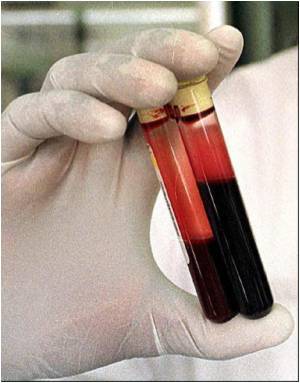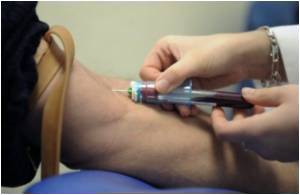The John Theurer Cancer Center at Hackensack University Medical Center announced today important research findings presented at the

"This year, we showcased 12 oral sessions and 28 poster presentations at ASH, including multicenter, international trials in collaboration with leading cancer institutions, such as the National Cancer Institute, MD Anderson, Dana-Farber, Mayo Clinic, Cleveland Clinic and Memorial Sloan-Kettering," said Andrew L. Pecora, M.D., F.A.C.P., C.P.E., Chief Innovations Officer, Professor and Vice President of Cancer Services, John Theurer Cancer Center. "We are proud that our research improves outcomes for our patients and helps set new benchmarks for the cancer treatment community."
The studies presented by the John Theurer Cancer Center include research advancements in lymphoma, multiple myeloma, stem cell transplantation, and leukemia. Oral and poster presentation highlights being presented at ASH include:
A Randomized Clinical Trial of Lenalidomide Plus Dexamethasone Followed by Autologous Stem Cell Transplantation (ASCT) in Multiple Myeloma. (Abstract number 38; oral session, December 5, 4:45 p.m. ET)
As lead author of a study by the Eastern Cooperative Oncology Group (ECOG), David S. Siegel, M.D., Ph.D., Co-Chief of Multiple Myeloma at the John Theurer Center, retrospectively analyzed data from the ECOG E4A03 trial. The earlier trial tested combination therapies for newly diagnosed multiple myeloma patients.
"We wanted to look at the effect of early autologous peripheral blood stem cell transplantation," said Dr. Siegel. "Transplantation in early-stage myeloma has become controversial because combination therapies with lenalidomide and dexamethasone have been shown to dramatically improve outcomes."
Advertisement
Patients in the study were randomized to receive either lenalidomide with high-dose dexamethasone or lenalidomide with low-dose dexamethasone. After four rounds of treatment, patients had the option of continuing with drug therapy or receiving a stem cell transplant. For patients under the age of 65 who survived four cycles of treatment, overall survival at three years was 94 percent with early stem cell transplantation, vs. 78 percent for those who continued to receive a drug regimen instead.
Advertisement
Is Pralatrexate Effective in Patients with T-cell Lymphoma who Fail ICE-Based Regimens? (Abstract number #1753; poster session, December 4, 5:30-7:30 p.m.)
Andre Goy, M.D., M.S., Deputy Director and Chief, Lymphoma and Director, Clinical and Translational Cancer Research, John Theurer Cancer Center, and colleagues analyzed data from the phase II pivotal trial of pralatrexate (known as the PROPEL study) – which led to the FDA approval of pralatrexate in September 2009.
The goal of the study was to determine the outcome of the subset of patients with Peripheral T-Cell Lymphoma (PTCL) who had previously received and failed or relapsed after ICE chemotherapy. ICE is a combination of ifosfamide, carboplatin and etoposide, currently used as standard salvage therapy in patients with PTCL in preparation of high dose therapy followed by autologous stem cell transplantation.
PTCL is an especially aggressive cancer that attacks immune cells that protect the body from viruses. It is typically resistant to second-line treatments, such as ICE regimens.
Forty percent of study patients treated with pralatrexate showed a partial or complete response. The authors concluded that the efficacy of this medication as a standalone treatment compared favorably to ICE-based regimens.
"Given the results, we will continue to explore the role of pralatrexate in combination with other agents to build upon its single agent activity. Our investigation will include PTCL patients in relapse and in the frontline setting in an effort to improve outcomes," said Dr. Goy.
Response of Multiple Myeloma Patients to Carfilzomib After Other Treatments Have Failed (Abstract number 985; oral session, December 7, 7:30 a.m.)
A new proteasome inhibitor may hold hope for patients with multiple myeloma who have been treated unsuccessfully with other drugs. Dr. Siegel and colleagues conducted an open-label single-arm phase 2b study of carfilzomib, a novel drug in development for treating multiple myeloma. The medication has already demonstrated antitumor activity in phase 1 and 2 studies in patients with relapsed or refractory myeloma.
The current study enrolled 266 patients (257 of whom could be evaluated), who had myeloma for a median of 5.4 years. Patients in the study must have received at least two prior treatments with other medications or stem cell transplantation, with a median pre-study rate of five prior courses of treatment. Eighty-three percent had disease that progressed within 60 days of their last previous treatment, and 17 percent had achieved less than a 25 percent response to their treatment regimen that immediately preceded the study. Patients received the carfilzomib in increasing doses for up to 12 treatments, and some also entered an extension study.
Thirty-six percent of study participants responded to carfilzomib, with a median response duration of 6.3 months in those with some response.
"This study demonstrates that carfilzomib has the potential to offer substantial clinical benefit to patients with relapsed or refractory myeloma," said Dr. Siegel. "We did not see cumulative side effects, indicating the medication may be appropriate for prolonged single-agent dosing for chronic disease."
Phase 2 Study of MLN8237, An Investigational Aurora A Kinase (AAK) Inhibitor in Patients with Acute Myelogenous Leukemia (AML) or Myelodysplastic Syndromes (MDS) (Abstract number 3273, poster session, December 6, 6:00 p.m.)
Dr. Stuart Goldberg, Chief, Leukemia, John Theurer Cancer Center led this open-label, multicenter, phase 2 trial of MLN8237 in patients with advanced AML or intermediate/high-risk MDS. AAK is essential for cell division (mitotic progression) and is amplified or overexpressed in AML and other blood cancers. An investigational drug, MLN8237 is an orally available, potent, and selective AAK inhibitor. It has shown preclinical activity against leukemia, lymphoma, and myeloma, and clinical activity against treatment-resistant cancers in early-stage human trials.
Fifty-seven patients with a median age of 72 years old (range 46-85) were enrolled in the current study. Patients received 21-day cycles of MLN8237 (50 mg) for seven days followed by 14 days rest until disease progression or unacceptable toxicity. Forty-six (81%) patients had AML, of whom 21 (37%) had secondary leukemia, while 11 (19%) patients had MDS.
Dr. Goldberg and colleagues concluded MLN8237 has anti-leukemia activity with a 13% response rate (all AML) with advanced, mainly pre-treated disease.
"We found that patients for with rapidly progressive disease, improved outcomes require strategies to enhance both disease control and risk management in early cycles, allowing time needed to achieve clinical benefit from AAK inhibition," said Dr. Goldberg. "Our results support further clinical studies of MLN8237 in heme-lymphatic malignancies and solid tumors."
The Eastern Cooperative Oncology Group, one of the largest clinical cancer research organizations in the United States, previously reported superior one and two-year survival for newly diagnosed symptomatic multiple myeloma patients initially treated with lenalidomide plus low-dose dexamethasone, versus those treated with lenalidomide plus high-dose dexamethasone. As a result of this analysis, lenalidomide plus low-dose dexamethasone is now considered the standard of care.
In this multicenter trial, lead author David Vesole, MD, PhD, FACP, Co- Chief and Director of Research, Multiple Myeloma, John Theurer Cancer Center and colleagues evaluated the impact of age on dexamethasone dose intensity and overall survival.
The study randomly assigned 445 to patients to LD (233 patients) or Ld (222 patients) treatment groups and analyzed data for all enrolled patients ("intent-to-treat" analysis) for overall survival. Patients in the high-dose group did not have better overall survival at any age, while the higher dose was more toxic.
"Our findings confirmed that as originally reported, low-dose dexamethasone should be the standard of care for all newly diagnosed multiple myeloma patients regardless of age," said Dr. Vesole.
Adoptive Transfer of Treg-Depleted Donor Th1 and Th2 Cells Safely Accelerates Alloengraftment After Low-Intensity Chemotherapy (Abstract number 521, oral session, December 6, 3:45 p.m.)
As part of a multi-center study done in collaboration with the National Cancer Institute and University of Pennsylvania, a team of six John Theurer Cancer Center researchers conducted a clinical trial to evaluate the effectiveness of infusing cultured donor immune cells known as "T-rapa" cells after stem cell transplantation into patients being treated for blood-related cancers.
The T-rapa cell is a type of white blood cell that is cultured with rapamycin, co-stimulation and interleukin-4. These cells express a balanced Th2/Th1 effector phenotype – a T-cell profile that is thought to protect against transplant rejection and improve the outcome of patients by reducing graft versus host disease and improving graft versus tumor effect.
Patients were assigned to one of two study arms: those receiving T-rapa cell therapy (day 14) after transplantation with a pre-transplantation regimen of either induction chemotherapy (Arm A) or after outpatient, low-preparative chemotherapy (on day 0) (Arm B). Of 65 patients between the two groups, high-risk non-Hodgkin's lymphoma (NHL) was the most frequent diagnosis (25 patients), followed by non-high-risk NHL (11), acute myelogenous leukemia/myelodysplastic syndrome (8), myeloma (7), chronic lymphocytic leukemia (6), Hodgkin's disease (5), and chronic myelogenous leukemia (3).
Arm A had the best results, with 37.5% (15/40) of recipients in sustained complete remission following the study and a median survival probability of 63.6% at 24 months post-transplantation. The authors conclude that pre-emptive infusion with T-rapa cells (ex-vivo manufactured T-rapa donor derived cells) that express a balanced Th2/Th1 effector phenotype represents a novel approach to safely accelerate transplant engraftment and harness graft-versus-tumor effects after low-intensity conditioning.
Source-Eurekalert















